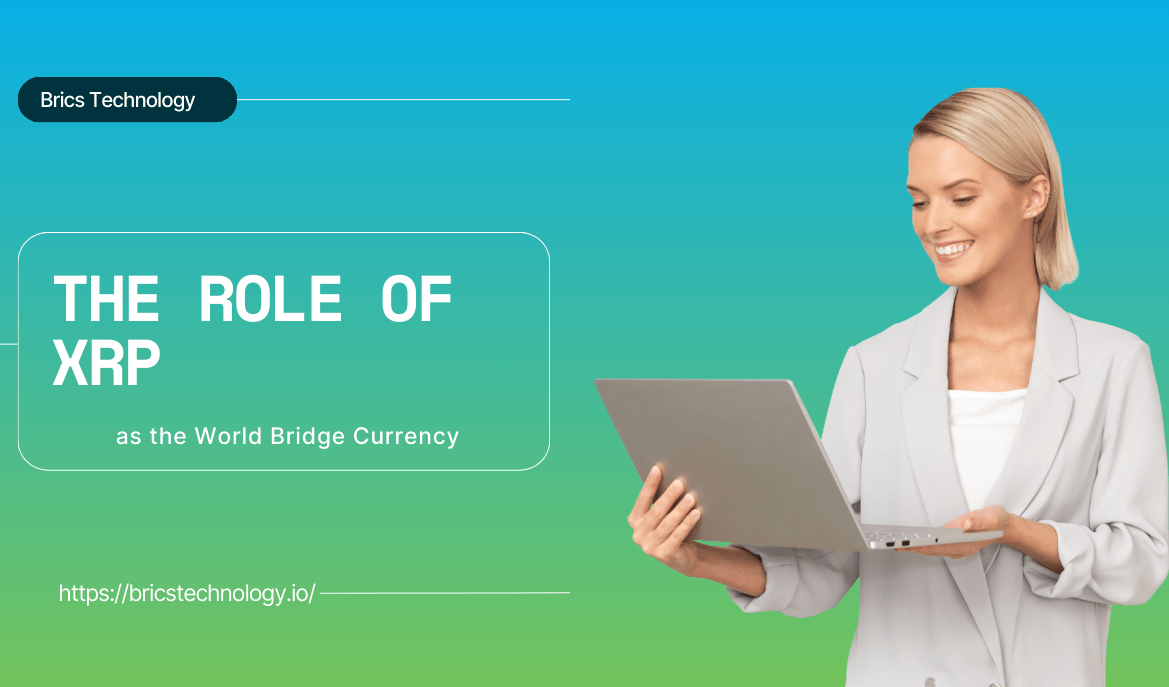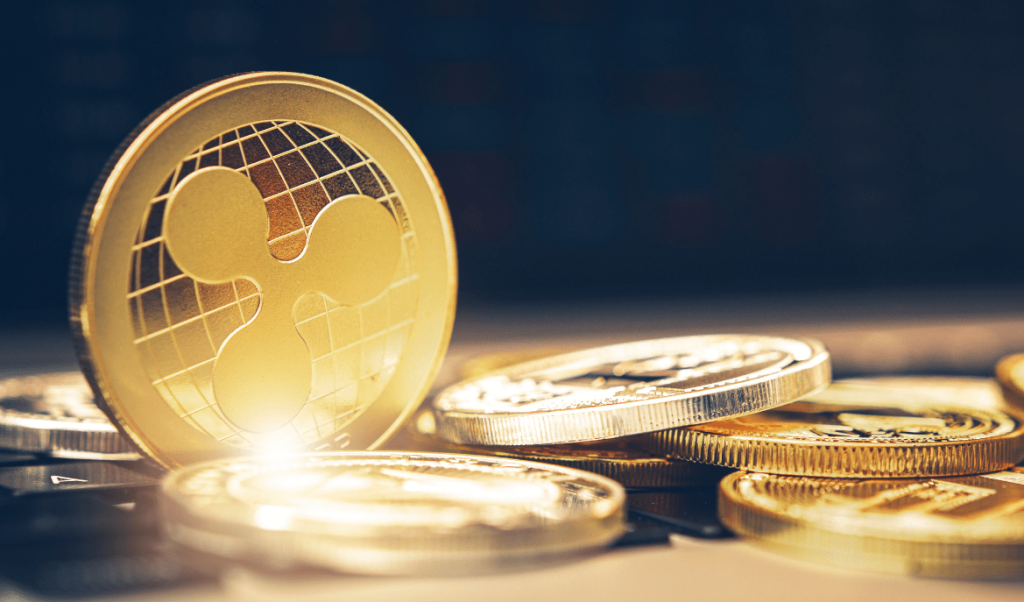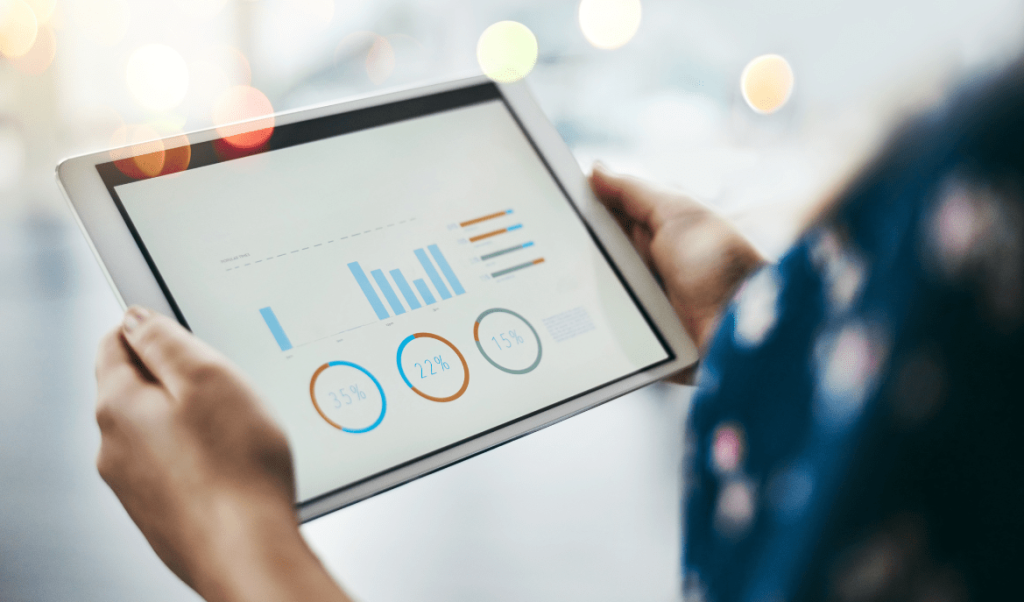The Role of XRP as the World Bridge Currency

What exactly makes XRP so special? Well, it is all about connecting different financial systems. Blockchain networks are made in a way that is cheaper and easier than traditional methods. In the world of digital finance, XRP has become a game changer.
Here comes the question: What is XRP? XRP is a digital cryptocurrency and the token of the Ripple network. As more businesses and people use it, it plays a key role. It was created by Ripple Labs, a technology company founded in 2012 by Chris Larsen and Jed McCaleb.
Let’s discuss the role of XRP. Chris provided his vision and strategy. XRP plays an essential role in bridging the gaps between these various systems. It is what we like to call the world’s bridge currency. It also helps connect different chains all over the globe. Let’s explore how it all comes together.
McCaleb was a technologist and the highly talented founder of Ripple. He was one of the developers of the XRP ledgers and the RPCA algorithm. Let’s dive into articles to get more information and deepen our knowledge.
What is XRP, and Why Does It Matter?

Simply put, XRP is a digital currency created by Ripple Labs in 2012. But there is something that makes it special. Some Bitcoin or Ethereum focuses on security. XRP was designed to solve a particular problem. You can make global transactions faster and more affordably.
Think about the traditional banking system. Sending money across borders takes days and costs a lot in fees. XRP speeds up that process dramatically—your cash flows across borders in just a few seconds and at a minimal cost.
So, what makes XRP stand out is its ability to act as a bridge currency. Ripple Labs has partnered with banks and financial institutions around the world. For what purpose? To make XRP an accepted currency for transferring money globally. It makes it easy for different currencies, either digital or traditional. As XRP serves as a bridge currency, an XRP Profit Calculator can help forecast potential gains, showing how efficient cross-border transfers might positively impact an investor’s portfolio.
Does that sound good? XRP can help make that transaction happen quickly and efficiently, no matter where or what currency you are dealing with.
The Technology of Ripple

Have you heard about RPCA? It is the whole technology that relies on it. RPCA stands for Ripple Protocol Consensus Algorithm. Now, let’s dive into the technology behind Ripple and XRP. Ripple is a payment protocol and network enabling fast, secure, low-cost international transactions.
What is its specialty? Ripple uses a consensus protocol to confirm transactions. Wow! This means Ripple is not only quicker but also more energy efficient compared to other cryptocurrencies. We have never heard this before regarding bitcoins or other cryptocurrencies.
At the core of its technology is Ripple Net, a decentralized network that connects financial institutions around the world. It is a global payments network that allows for instant settlements and minimal fees.
The Ripple network uses XRP as a bridge currency. You may transfer value between two different currencies—amazing! Cross-bridging XRP is an attractive solution for cross-border payments. Ripple can process thousands of transactions per second, thanks to its fast processing time.
Use Cases of XRP
XRP is not just a currency; it is a key player. People who buy XRP know that it is modernizing the financial world. Let’s take a look at some of the most popular use cases of XRP:
1. Cross-Border Payments
One of the key features is cross-bridging XRP. It provides fast, low-cost, cross-border payments. Forget about traditional banking systems, which can take days to process international transfers and incur high fees.
With XRP, these transfers can happen in seconds. The good news is that they have significantly lower fees. It sounds more like a Ripple Net cloud and makes a stronger connection.
2. Liquidity Management
Financial institutions often need access to liquidity to settle payments in different currencies. XRP is used as a bridge chain. It provides instant liquidity without needing to pre-fund accounts in other countries.
3. Decentralized Finance (DeFi)
As XRP grows in popularity, it’s being introduced into decentralized finance. People can lend, borrow, or trade assets directly on blockchain networks. You do not need banks to do this.
4. University Blockchain Research Initiative (UBRI)
Ripple Lab introduced UBRI. Now, you will experience speedy academic research. What else? Technical advancement in the world of cryptocurrency. Many universities around the globe have collaborated with UBRI.
5. Micropayments
Thanks to its low transaction fees! It is an ideal choice for micropayments. Small everyday transactions like paying for online content or tipping a content creator. It allows for small payments to happen quickly.
XRP Token: Key Features & Use Cases

The XRP token is designed to offer a fast, secure, and efficient way of transferring value globally. Let’s break down its key features and how it’s used:
Key Features of XRP
Speed: We already discussed XRP as a quick and easy method. Unlike Bitcoin, transactions using XRP are completed in just a few seconds, which can take several minutes to process. Now, you need 3-5 seconds, as XRP offers nearly instant transfers—perfect for real-time transactions!
- Low Fees
Your bank can charge you a lot while transferring money. Even the other transfer methods can charge you. But now you have found a method. XRP transactions have incredibly low fees, which is good news for anyone who makes frequent international payments or micropayments.
- Scalability
One of the key features is its ability to handle over 1,500 transactions per second. XRP can scale up to meet the demands of large global markets without slowing down. Pretty Scalable? A real option for broad adoption in the international financial system.
- Energy Efficient
Unlike Bitcoin or Ethereum, XRP does not rely on energy-consuming mining processes. So, now you have found an environmentally friendly option in the crypto world.
XRP as the World Bridge Currency

As the world becomes more digitally connected, there is a growing need for a world bridge currency. A universal currency that can connect financial systems across borders. XRP is in a perfect position to fill this role. Unlike other cryptocurrencies, XRP can settle transactions in just a few seconds.
What makes XRP an actual world bridge currency is its ability to work with both digital and traditional currencies. Whether you are transferring Bitcoin, US dollars, or anything in between, XRP can make it happen quickly and affordably. Without cross-bridging XRP, payments would still rely on slow systems. XRP Price Prediction forecasts often factor in XRP’s role as a world bridge currency, highlighting its potential to connect different currencies on a global scale seamlessly.
How to Convert ETH to Ripple (XRP): A Step-by-Step Guide Using RocketX
Converting Ethereum (ETH) to XRP can be a simple process. Simply using platforms like RocketX can make it even easier. Here is a step-by-step guide to show you how:
Step 1: Create an Account on RocketX
First, you will need to create an account on RocketX. This platform allows easy conversions between different cryptocurrencies, including Ethereum and XRP. Registration is easy; you will only need to provide basic information.
Step 2: Deposit ETH into Your RocketX Wallet
Once your account is set up, deposit your Ethereum (ETH) into your RocketX wallet. You can transfer ETH from your wallet or another exchange platform.
Step 3: Choose ETH to XRP Conversion
Next, select the option to convert your ETH to XRP. RocketX will show you the current exchange rate for ETH to XRP. You can decide how much you want to convert.
Step 4: Confirm the Transaction
After you have carefully reviewed the transaction details, click the confirm button. This action will initiate the conversion, and RocketX will handle the rest.
Step 5: Wait for Confirmation
The transaction is usually completed in seconds. XRP will appear in your RocketX wallet, indicating that you have successfully converted your ETH to XRP.
Step 6: Enjoy Your XRP!
Once the transaction is confirmed, your XRP will be available for use. You can now hold, transfer, or use it within the Ripple ecosystem.
Top Wallets for Managing XRP on the Ripple Network

If you plan to store or manage XRP, choosing the right wallet is crucial for security and ease of use. Here are some of the best wallets available for managing your XRP on the Ripple network:
Ledger Nano S/X (Hardware Wallet): The Ledger Nano series is an excellent option for maximum security. It stores your XRP offline so that no one can hack it. It is Ideal for long-term storage.
Xaman (non-custodial XRP Wallet) is one of the top choices for XRP users. It is a non-custodial XRP wallet that gives you control. Not even a third party can access your wallet, and its private keys provide enhanced security. Not even a third party can access your wallet, and its private keys provide enhanced security—helping mitigate potential Cybersecurity risk in digital asset management.
Trust Wallet (Multi-currency Mobile Wallet): Trust Wallet supports multiple cryptocurrencies and is highly secure. What makes it perfect? You can manage your XRP on the go. It is also a user-friendly and reliable choice for crypto. It is one of the popular wallets out there.
Xumm (Mobile Wallet): Do you know its special features? It is built specifically for the Ripple network. It is a trusted tool with the XRP ledger. It also allows users to interact with its features. Users can sign transactions directly on their page.
The Future of XRP as a Bridge Connected by Chains
Looking to the future, XRP is set to play an even more significant role. As more blockchains are created, the need for cross-bridging XRP will grow. The best part? XRP is already well on becoming a central figure in this new financial world.
However, Ripple continues to build its network and attract more partners. XRP will become even more essential for facilitating smooth cross-border transactions.
What is exciting is that XRP is not just about moving digital currencies around. It is about connecting entire financial ecosystems. The need for XRP to serve as a bridge connected by chains will grow. Whether it is for cryptocurrencies or even traditional finance, XRP has the potential to become the key player.
Conclusion
XRP is proving to be a piece of the puzzle. As a world bridge currency, it is helping to connect different blockchains globally. It made cross-border transactions faster. A cheaper and more efficient method. Its ability to perform cross bridging XRP enables the transfer of value across different networks.
Successfully, it is breaking down barriers between them. Whether cryptocurrencies, tokenized assets, or even traditional currencies, XRP is making it easier for businesses and individuals to transfer value across borders.
The future looks bright for XRP. As blockchain technology evolves, XRP will continue to connect different chains, enabling a more connected global economy. With its speed, low fees, and ability to bridge various financial systems, XRP is becoming a more efficient and inclusive economic future.
Frequently Asked Questions
XRP is a digital cryptocurrency created by Ripple Labs. It is often called the world bridge currency because it is designed to bridge different financial systems globally. XRP enables faster, cheaper, and more efficient cross-border transactions. Its key feature? Cross-bridging XRP helps connect different financial ecosystems. It makes transactions happen in seconds.
XRP is a world bridge currency because it facilitates the smooth transfer of value across different financial systems. Whether you are dealing with cryptocurrencies, traditional currencies, or even assets, XRP can bridge those gaps. This bridge, connected by chains, makes it efficient for global transactions.
Ripple uses the Ripple Protocol Consensus Algorithm (RPCA) to process transactions quickly. Unlike Bitcoin or Ethereum, XRP is energy efficient. Using cross-asset bridging XRP, Ripple allows users to convert and transfer various assets through its network, making international transfers fast and affordable.
Absolutely! One of the most significant uses of XRP is cross-bridging XRP to make cross-border payments. Traditional banking systems can take days and charge fees for international transfers. But with XRP, transactions happen in seconds at minimal costs. It is a cross-chain bridge, allowing different currencies and financial systems to interact easily.
Catagories
Recent Post
- Tired of Disconnected Systems? How Cloud Telephony + CRM Improves Efficiency
- Stealthly AI: Transforming AI Content into Authentic Human Text
- Why Weighted Grade Calculators Matter for Accurate Academic Planning
- Customize Your Phone Sound with a Free Online Ringtone Maker
- How to Use AI in Stock Trading for Smarter Decisions
